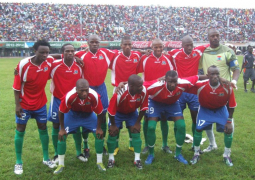Following series of reports portraying the nature of malaria in
As part of celebrations marking World Malaria Day and the set objectives made by Standard Chartered Bank to tackle malaria in The Gambia and
As a leading financial institution in The Gambia that helps to lend support to the economy, the bank also deems it necessary to engage in other partnership programmes which provide for the past two consecutive years over D220, 000 yearly, as contribution to the
In his statement on the occasion, Humphrey Mukwereza,
He posited that over 80 staff of the bank collaborated with the National Malaria Control Programme to contribute 100 insecticide treated bed nets and 100 bottles of mosquito repellent sprays.
Speaking on behalf of the Regional Health Director, Western Region, Mr Juma Jallow informed the gathering that malaria is associated with major complications among children under five years and pregnant women. "The most common and most important complications of the infection in children and pregnant women include cerebral malaria, severe anaemia, respiratory distress, hypoglycaemia, low birth weight, abortions, still and premature deliveries among others," he said.
Mr. Jallow reckoned that malaria causes 15% of maternal anaemia and about 35% of preventable low birth weight.



